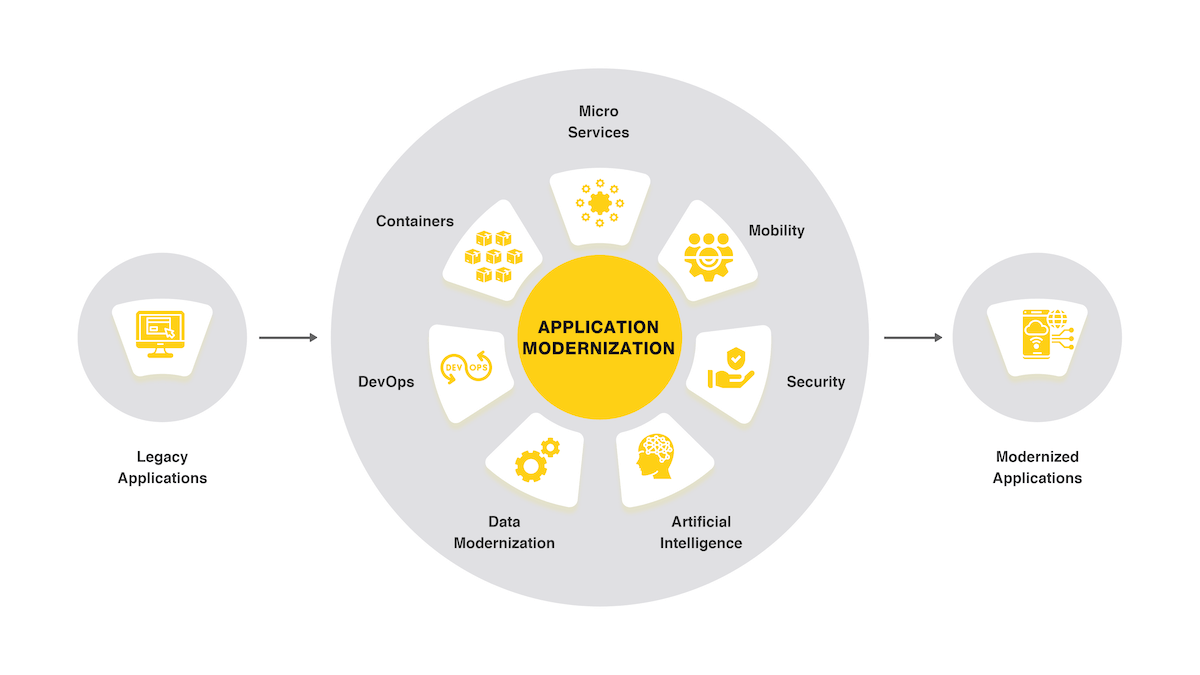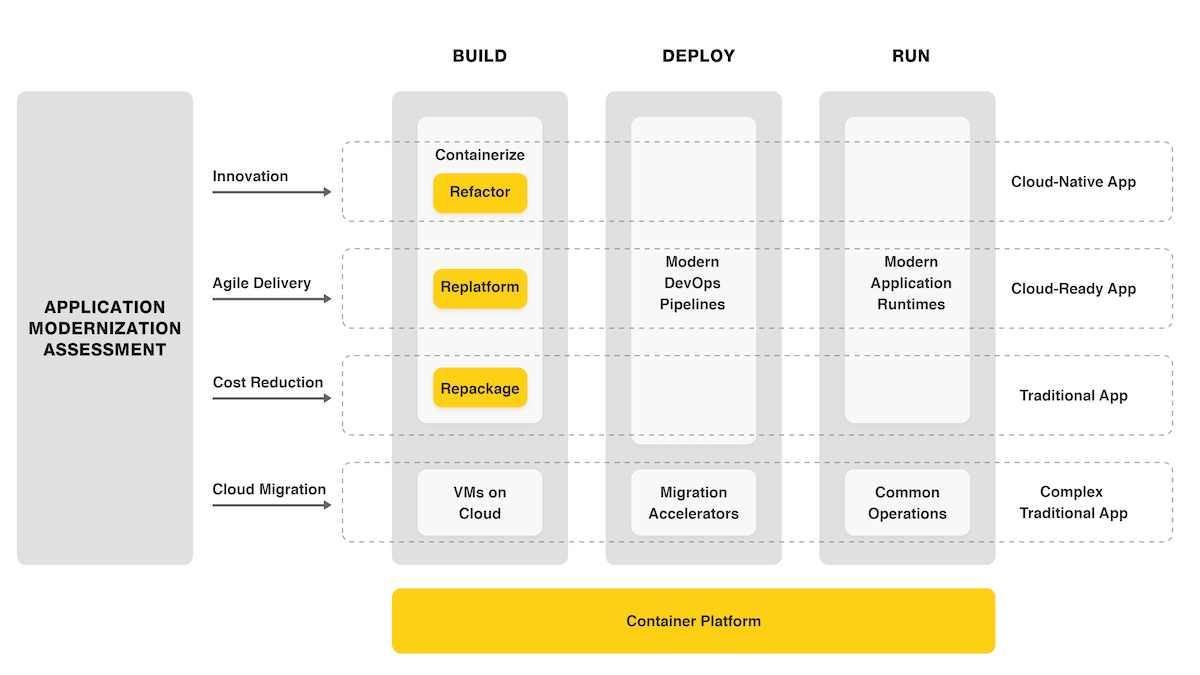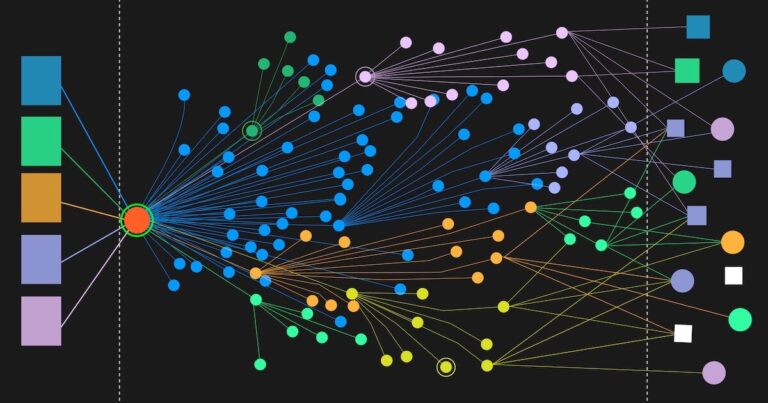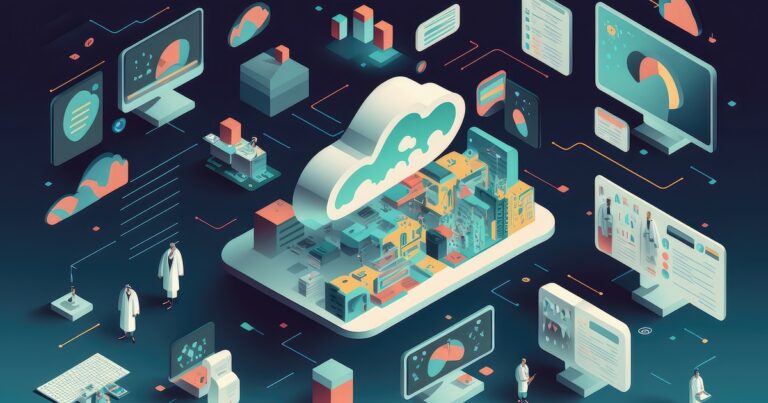Not all organizations were born digital, but they have survived for over a hundred years while maintaining their competitive positions. All because they continued adopting evolving technologies, including investing in IT infrastructure and cloud development when required. They understand the importance of being digital and operating in a digital environment. They also understand the importance of being agile and responsive and being an innovative competitor that operates the business with flexible and scalable infrastructure, applications, and data.
Hence, when companies realize that their legacy systems are holding them back, they look to application modernization services to get help and remove the obstacles. According to a survey conducted by Statista with CIOs of different U.S. Organizations, 49% responded that their company has a cloud smart strategy to deploy all new applications to the cloud. Whereas, 18% answered that they have a cloud-first strategy for all new applications deployed to the cloud. Only 8% of respondents answered that their company has no statewide cloud migration strategy in place yet whereas 16% respondents mentioned that they have a statewide cloud migration strategy planned.
In another report from Statista, the research firm found that the global application modernization tools market is expected to proliferate in the coming years and reach a size of 36.86 billion U.S. dollars by 2027. The need for elasticity, resiliency, ease of deployment and management, and flexibility that comes with application modernization and migration driving the demand for automated processes to enable high-performing software development setup to power the company’s ability to deliver measurable and sustainable outcomes, such as:
- Improving customer experience and loyalty with a differentiated customer experience
- Disrupting the industry and the competition
- Introducing innovation at a rapid pace
- Optimizing the cost, speed to market, and volume of new digital experiences
- Supporting mandated changes such as regulatory compliance in a timely way
The question is not whether to modernize but what and how to modernize. Should you move your core applications to AWS? Which business areas or applications will deliver the largest impact or highest value for the business when modernized? What are the best practices for breaking monoliths apart?
In this post, we will answer these “what” and “how” questions about your enterprise application modernization needs and share the process and best practices you need to make room for innovation. But before that, let’s understand what application modernization is.
What is Application Modernization?
Application modernization is the method of aligning legacy or dated enterprise software to your current business needs. It requires your to build a strategy, adopt modern processes and advanced tools to achieve the speed and agility that lack while working with legacy applications. The strategy enables you to reduce the footprint of internal servers and the accompanying expenses. With application modernization, businesses achieve increased agility, speed, scalability, reliability, and security. Modernizing an application, however, does not need to start from scratch. The modernization of applications can be done in a variety of ways. You might cut costs and get the best return on your investment if you know the best strategy for your company’s demands.

What an ideal application modernization principle looks like is the use of microservices and APIs to build new apps and connect them with other applications to maintain continuity. On the other hand, leveraging containers and serverless to enable portability, speed, and cost efficiency. And using DevOps and DevSecOps with an automated CI/CD pipeline to instill security from the beginning, a faster development cycle, and rapid innovation.
Challenges Of Running Business with Legacy Applications
Many business executives don’t completely oppose modernization. They come up with various excuses not to update the systems. These justifications may be valid at the time but may ultimately harm the company. Neglecting to modernize legacy systems poses numerous dangers to running legacy applications, such as:
1. Risk of Losing Customers
If you don’t give your clients the most recent applications or features, someone else will. And if your customer is in the habit of using cutting-edge technology, they won’t accept anything less and would probably switch to your competitor’s products or services.
2. Wasting Money on Maintenance
A narrow view of operating and maintenance costs could result in inaccurate estimations. While spending a certain amount of money on maintenance may seem acceptable in the short term, migration is ultimately vital for legacy applications to survive.
3. Lack of Vendor Support
Most legacy software is not supported by their vendors. The reasons could be that those are not being sold any longer. What that means is when you have questions or encounter problems, there is no one to help you troubleshoot. You may receive support from a third-party vendor, but that can become unlikely as the technology is outdated.
4. Reduced Pace of Innovation
When you manage your business processes with various outdated software, you risk accidentally creating data silos that are unavailable to you. Implies that you lack access to the data’s understanding, which ultimately makes your decision-making process less effective.
Benefits Of Application Modernization
When outdated software is used to support business operations, your risk, expenses, and business agility are all likely to rise. Let’s examine the advantages of updating your apps and software.
1. Mobility
Legacy application modernization eases your tradition to a hybrid cloud environment. You can run your application wherever you want, whenever you want.
2. Flexibility
Leveraging cloud-native microservices architecture allows you to capitalize on the scalability and flexibility inherent to the cloud. Modernizing your application with the cloud opens the door to business and technical benefits for your organization.
3. Lesser Time-To-Market
With legacy application modernization, you adopt DevOps and microservices, and automated processes. It allows you to embark on a more-frequent delivery process with high-quality software.
4. Reduced Cost
Moving to cloud-based resources will allow you to switch from CapEx to the OpEx model. You can allow your team to provision cloud resources when required and put the resources on hold or terminate them when no longer needed. There will not be idle resources backing up your maintenance cost as well.
5. Increasing Agility and resilience
Application modernization helps you achieve business agility and resiliency. The cloud provides environment parity allowing developers to write portable code, and helping companies meet clients’ needs faster. Since infrastructure is now deployed on multi-region with integrated replicas and backup, organizations achieve better IT resilience to respond to any hindrance or failure within minutes or hours instead of days or months.
Application Modernization Approaches
When considering whether to modernize software and app, you can choose from many options from application modernization approaches, such as:
1. Rehost: Migrate the application from the present mainframe data center servers to cloud infrastructure.
2. Replatform: Switch to a new operating system via migrating the program code. This calls for modifications to the software architecture and the code level (interface and functionality).
3. Refactor: Optimize existing code for improved functionality on new platforms and cloud infrastructure.
4. Rearchitect: Thoroughly change the software architecture to introduce new features and functionality.
5. Rebuild: Restart the project from scratch, replicating the functions and features.
6. Replace: Eliminate legacy technology and invest in an alternate solution.
You can also check a detailed eBook on application modernization approach.
Prior to deciding the best route for your modernization project, you first need to understand the pros, with a clear picture of the current status and future goals.
Application Modernization Process
Maintaining your organization’s competitive advantage and market share depends on modernizing your applications to satisfy consumer requests and capitalizing on the shifting technology landscape. By transitioning dated programs to more contemporary architectures, a critical tactic for satisfying these business demands is to deliver both continuous use and real value. A crucial step in rolling out application modernization is a thorough grasp of the application’s specifics and relationships with other systems. You can divide your application modernization approach into 4 steps:

Assessment: The application modernization process begins with deep application portfolio readiness and assessment. It helps you identify the readily available application to move to the cloud platform or the applications that would need refactoring to run on the cloud. In this step, you must determine the business, functional, technical, and financial significance of cloud migration.
Build: Based on business requirements and assessment of the legacy system, you should plan and implement cloud-native approaches and best-of-breed languages and frameworks. To develop a modernized application, use loosely coupled microservices and lightweight contents and begin with API first approach with orchestration and automation capabilities.
Deploy: Use the DevOps pipeline to quickly and reliably deploy the code using automation. Package your microservices with containers or serverless technologies and use an orchestration platform such as Kubernetes that provides you with portability, scaling, and faster deployment of your applications.
Run: Develop a standard management and operations approach to run the application seamlessly and for faster problem resolution. Include and implement governance and compliance from the beginning, and integrate monitoring and observability to understand the health positions of your distributed architecture. Set up SLAs with well-defined SLOs and SLIs and provide your team with better capabilities to deal with incidents and respond with data.
Risks of Legacy modernization
Legacy application modernization seems like an easy and logical decision when dealing with multiple decades-old systems—modernize and become more productive. Cloud advantage also seems promising, but in a Gartner research, the consulting company warned that moving away from the legacy systems could end up costing more and pose a risk to quality. Therefore before leaping into a modernization effort, you must plan to move with caution. However, in the same report, Gartner provided solutions to organizations to overcome application modernization challenges with these steps:
- Prioritize company needs and capabilities over perception. Even Gartner’s chosen phrase, “traditional,” which carries connotations, might steer decision-makers toward modernization when it is neither essential nor even advantageous.
- Focus on misalignments or gaps between business requirements and what the platforms deliver when auditing current platforms and procedures. Instead of beginning with the assumption that change is required, work with what you already have.
- Take into account the overall cost of ownership over a number of years, which includes the cost of transitioning and dependencies. Organizations may correctly prioritize projects that will generate the most business value while limiting risk by concentrating on business needs and the cost of ownership.
Application Modernization Best Practices
We’ve seen a tonne of firms use app modernization initiatives to cut costs and boost performance. But it might be challenging to know where to start for firms that have been using the same legacy apps for many years. Here are five suggestions for IT and business leaders who want to begin modernizing apps.
1. Identify Pain Points in the App Modernization Process
What issues am I attempting to resolve? Before starting to modernize a platform, IT and business management must first ask themselves this question. The performance of legacy applications may be poor, data may not be easily accessible, or outdated apps may be introducing serious security flaws. Organizations can make sure that their app modernization initiatives stay on course and produce real value by recognizing existing pain points.
2. Look for New Opportunities to Create Value
Although solving problems is crucial, it is also a reactive process by nature. Organizations should actively look for methods to offer value after addressing the obvious pain areas in their old apps. This frequently results from the addition of new features or the improvement of current capabilities. One major advantage of modernizing apps is that it leads to more agile software programs and development techniques, enabling teams to publish updates anytime they spot a problem. Utilizing the shorter time-to-market, businesses should continue to look for methods to enhance the user experience.
3. Start with Smaller Problems
One of the most prominent errors businesses make when modernizing apps—and really, with most IT initiatives—is trying to “boil the ocean.” Organizations that begin by solving little challenges and then expand on their early successes are typically the ones that have the most success. Starting small will allow IT shops to show the value of app modernization and generate enthusiasm among staff members for their initiatives. Starting small will yield quicker results and give a company more opportunity to explore without the risk entailed by a significant financial commitment.
4. Focus on Business Outcomes
We all have the propensity to view the world through the prism of our work. This frequently results in app development and modernization teams being more concerned with the app itself than the business goals that an app enables. This is particularly true for larger companies, whose development teams are frequently siloed and, as a result, hyper-focused on the technology underlying a single process. Because they are intelligent individuals, app developers will continue to develop cutting-edge, novel software features if given the freedom to do so. And when given explicit instructions to improve business outcomes, they will put their skills to work in that direction.
5. Leverage Partner Expertise
IT and business management just need to learn what they don’t know when a company is just beginning its app modernization journey. By relying on a reliable partner like Successive Cloud, businesses benefit from a fresh pair of eyes on their app environments and the experience gained through years of assisting other organizations with their app modernization initiatives. IT and business leaders should avoid making the same mistakes their colleagues have by asking for assistance early on in the process, which will position their companies for success.
Conclusion
By modernizing your applications, your company can benefit from the most recent technological advancements. Your outdated legacy programs can thus be upgraded to a whole new level. Remember that there is a rising demand for high-tech applications with seamless functionality. As a result, companies that don’t embrace innovation will struggle to succeed in the future. Do you want to speed up innovation with application modernization? Consult with Successive – a top application modernization services provider, to discover all opportunities now.




